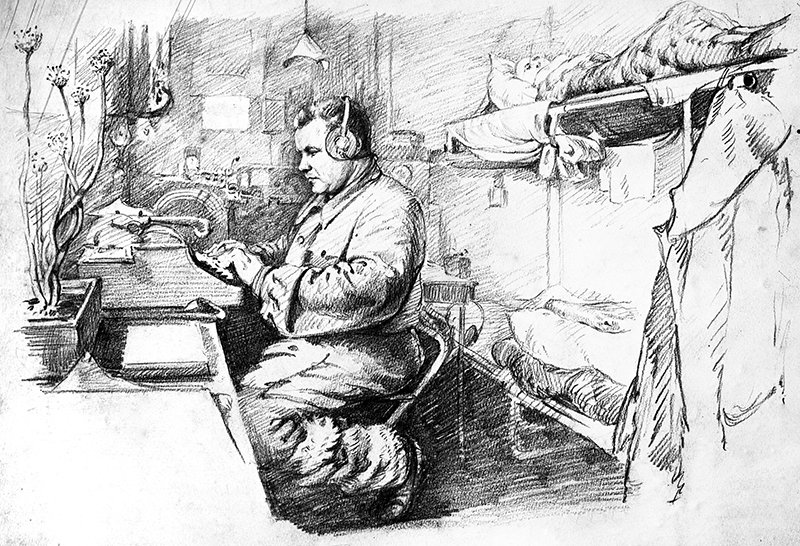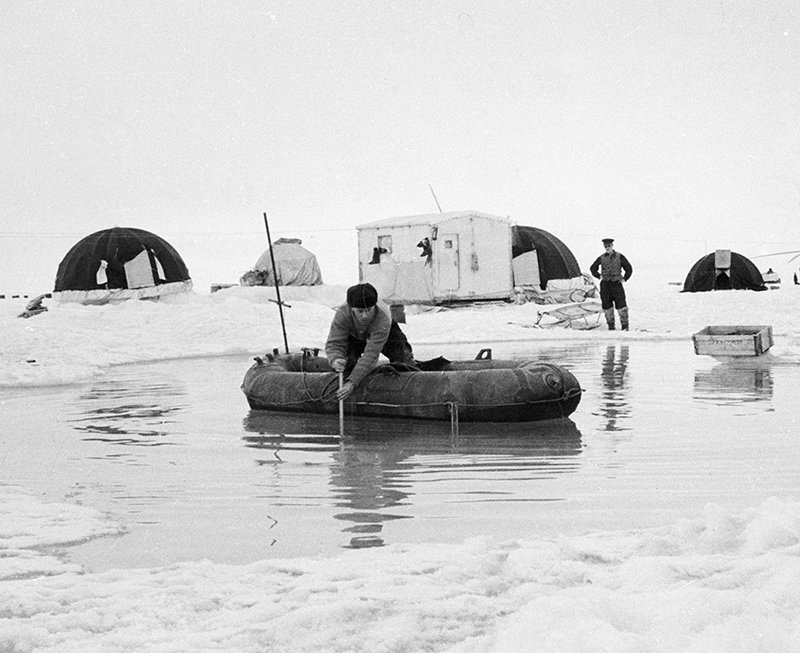In late 1953, simultaneous preparations to set up drifting stations on ice-floes in the Central Polar Basin began in Moscow and Leningrad. Several weeks later, aircraft started delivering cargo to the Arctic.
We had planned to establish the North Pole 4 drifting station north of Wrangel Island, but it turned out that the area had mostly new ice formations. After discussing the situation, we decided to fly another reconnaissance mission there. We eventually found an ice floe that could receive planes.
We inspected the area around the ice floe and found there was no other suitable ice formation north of it. We pitched the first tent for the North Pole 4 drifting station and got to work. Our station was located 200–400 kilometers south of the planned landing area
The station's crew members began arriving on April 10. Radio operators and a meteorologist joined our small group. We set up two other tents; one accommodated a radio transceiver, and the meteorologist used the second tent. The radio transceiver sent the first reports of our life and work back to Moscow.
While flying another reconnaissance mission some time later, I found an old ice floe covered with bumps southeast of our own ice-field. The nearly round ice floe had a diameter of almost 2,700 meters. As the ice floe was surrounded by hummocks, it had apparently withstood substantial pressure from nearby ice formations. A patch of ice-free water loomed to the south. The ice floe's thickness ranged from 2.4 meters to 16–18 meters on some bumps. We decided to set up our station to this ice floe.
Here's how we arranged the tents: The mess-room and the observation tower were installed in the center. Sleeping tents were located 20–25 meters away. Utility rooms, food storerooms, and tents for fuel and other consignments formed a larger circle. Several separate food, gas tank and gasoline stores were established to prevent a complete loss in case of unexpected ice shifts.
We started working right away, and we also pitched sleeping tents and prefab huts. Less than a month after the station was established, we had the mess-room, galley, steam bath, workshops, warehouses and reserve tents. We prepared emergency food stock, tools, instruments and other gear for possible relocation.
There was a lot of work, and we only slept three to four hours each day. But our success was guaranteed by a sense of responsibility for the project and by our solid friendship and mutual assistance


